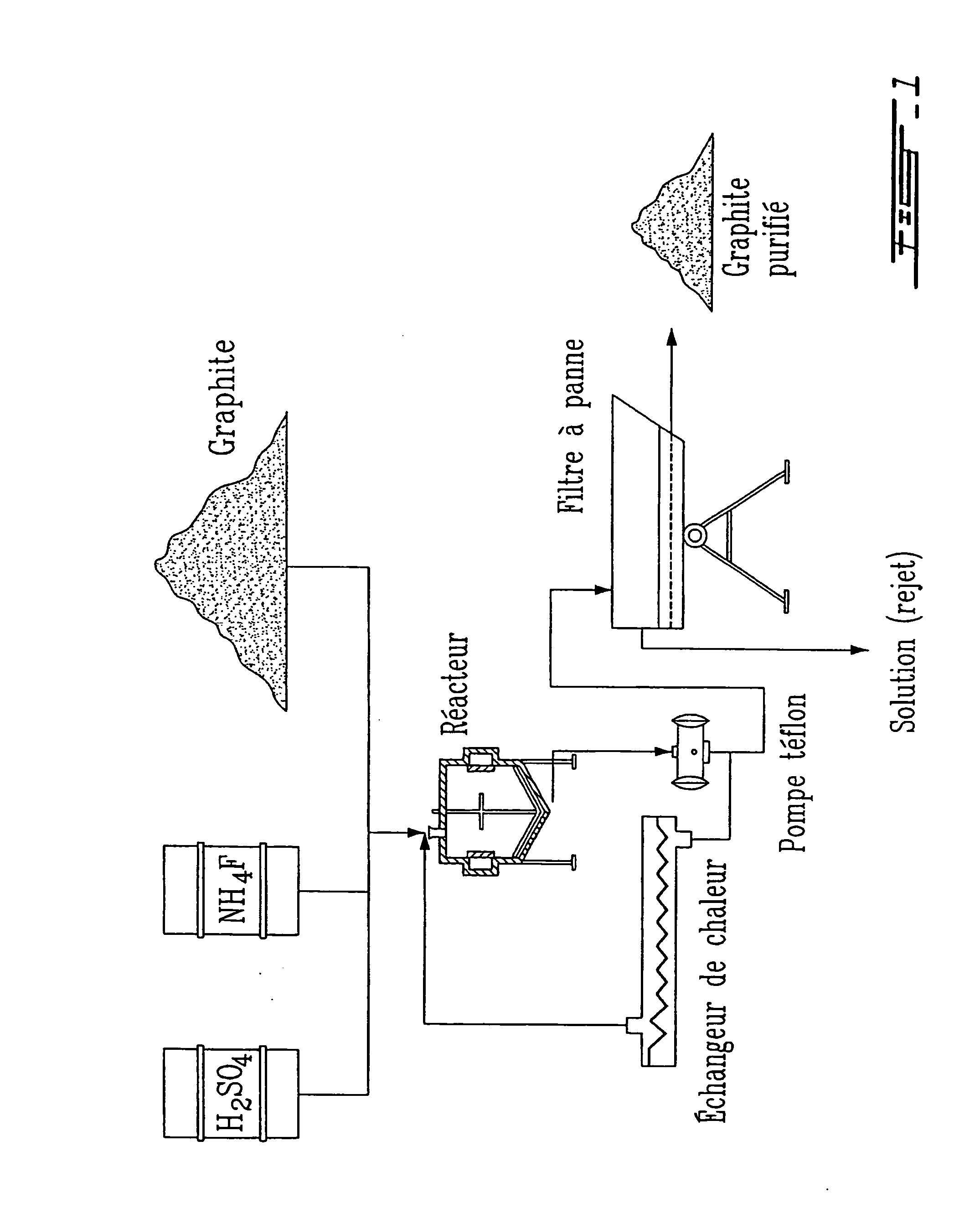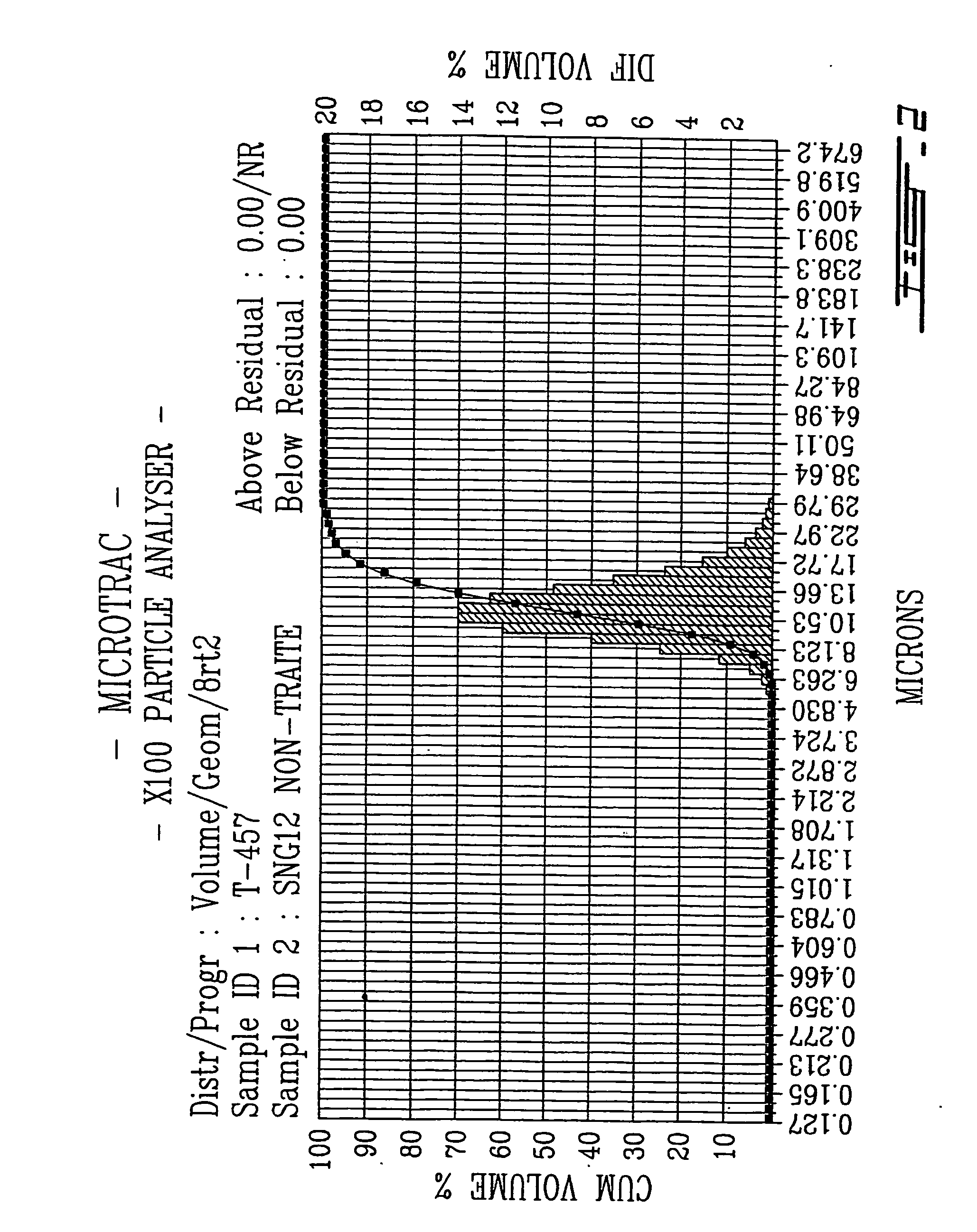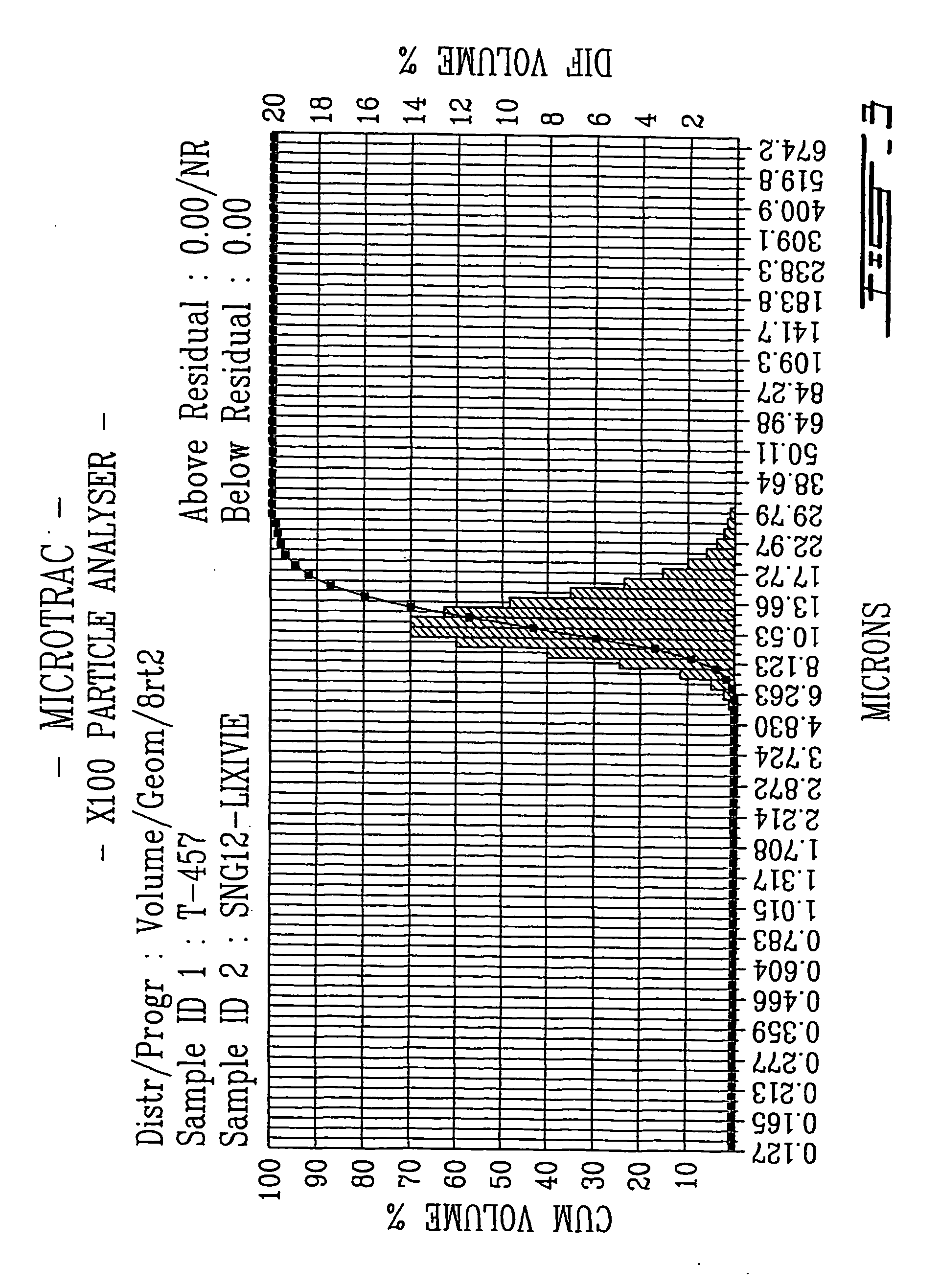Method for the surface purification of a graphite containing impurities using a dilute aqueous solution of nh4f and h2so4
a graphite and impurity technology, applied in the field of graphite surface purification, can solve the problems of violent degradation of the battery, reducing the mobility as well as the maximum concentration of the lithium battery inside the plane, and delay the appearance of the lithium battery of standard formats
- Summary
- Abstract
- Description
- Claims
- Application Information
AI Technical Summary
Problems solved by technology
Method used
Image
Examples
example 1
[0071] 30 grams of a natural graphite StratminGraphite (Lac des îles—Québec) having an initial particle size of 375 μm are crushed by an “air-milling” process until the particles reach a size of 10 μm. The average size obtained for the particles (D50%) is 10.52 μm. The Gaussian distribution of graphite has a single maximum without any shoulder. The size distribution was determined by means of the Microtrac™ particle analyzer manufactured and sold by Leeds & Northrul. Methanol was used as carrier liquid. Subsequently, the crushed graphite was leached in a reactor filled with 106.5 ml of an aqueous bath of HF 30%. The temperature of the mixture was fixed to 90° C., and the leaching time was 180 minutes. The graphite was thereafter filtered, washed with full water, and the powder was dried during 24 hours at 120° C.
[0072] The graphite powder obtained is analyzed by backscattering coupled with EDX. No exfoliation of the particles was observed. On the other hand, EDX analysis shows that...
example 2
[0076] 30 grams of a natural graphite StratminGraphite (Lac des îles—Québec) having an initial particle size of 375 μm are crushed by an “air-milling” process until the particles reach a size of 10 μm. The graphite is then leached in a bath consisting of 106.5 ml of an aqueous mixture comprising 30% H2SO4 and 30% HF. Then, 106.5 ml of the acid mixture is heated to 90° C. and 30 g of graphite are then added to the solution. The graphite is leached during 180 minutes in the reactor. The solid is thereafter filtered, washed in full water, and dried at 120° C. during 24 hours. The size (D50%) of the particles obtained is 10.92 mm, and this before and after purification. The gaussian distribution of graphite has a single maximum, without any shoulder.
[0077] An analysis of the impurities of this graphite by EDX shows a major presence of the elements Ca and F. An analysis of the residual ashes from the impurities present in and at the surface of graphite shows a purity of 99.68%. Preparat...
example 3
[0079] 30 grams of a natural graphie StratminGraphite (Lac des îles—Québec) are treated similarly as in example 2 except for the acid concentration of HF which, in the aqueous bath, is now 20%. An analysis of the impurities of this graphite by EDX shows the major presence of the elements Ca and F. An analysis of the residual ashes from the impurities that are present in and at the surface of the graphite shows a purity of 99.75%. The preparation of the electrode and the electrochemical tests are identical to the procedures described in example 1.
[0080] Coulomb efficiency of the first cycle is 89%. The irreversible plateau of the passivation film is normally formed at about 800 mV. The reversible capacity of the graphite is 365 mAh / g and the equivalent of x=0.98 according to the formation of LixC6.
PUM
| Property | Measurement | Unit |
|---|---|---|
| size | aaaaa | aaaaa |
| size | aaaaa | aaaaa |
| size | aaaaa | aaaaa |
Abstract
Description
Claims
Application Information
 Login to View More
Login to View More - R&D
- Intellectual Property
- Life Sciences
- Materials
- Tech Scout
- Unparalleled Data Quality
- Higher Quality Content
- 60% Fewer Hallucinations
Browse by: Latest US Patents, China's latest patents, Technical Efficacy Thesaurus, Application Domain, Technology Topic, Popular Technical Reports.
© 2025 PatSnap. All rights reserved.Legal|Privacy policy|Modern Slavery Act Transparency Statement|Sitemap|About US| Contact US: help@patsnap.com



